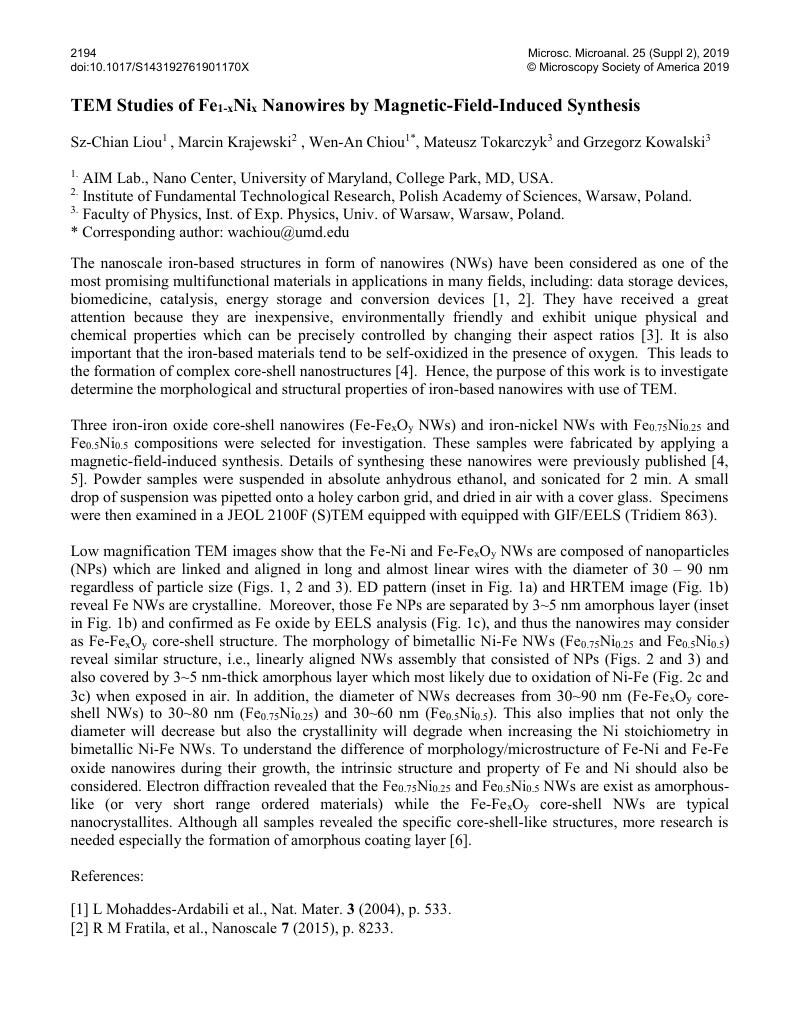No CrossRef data available.
Article contents
TEM Studies of Fe1−xNix Nanowires by Magnetic-Field-Induced Synthesis
Published online by Cambridge University Press: 05 August 2019
Abstract
An abstract is not available for this content so a preview has been provided. As you have access to this content, a full PDF is available via the ‘Save PDF’ action button.

- Type
- Microscopy and Spectroscopy of Nanoscale Materials for Energy Applications
- Information
- Copyright
- Copyright © Microscopy Society of America 2019
References
[6]This research was supported by National Science Centre (Poland) (grant no. 2016/23/D/ST8/03268). TEM work at AIM Lab was partially supported by NSF-MRSEC (DMR 05-20471) and UMD.Google Scholar


